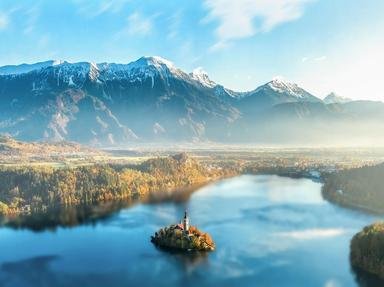Quiz Answer Key and Fun Facts
1. Because of its central location in southern Europe, the independent nation of Slovenia has had a number of rulers over its long history. Which one of the following was *NOT* one of its rulers before WWI?
2. Before Slovenia became incorporated into Yugoslavia after WWI, Slovenia formed (briefly), The Kingdom of Slovenes, Croats and Serbs. True or false?
3. Because of its central position in Europe, Slovenia is bordered by four nations yet only one was also part of Yugoslavia. Which one?
4. There are four distinct regions in Slovenia from coastline to Alpine mountains yet the terrain is dominated, perhaps unusually for the region, by one particular land type which is?
5. Ljubljana, the biggest city by far, has always been the major city of the Slovenes. Centrally located, what is the symbol of the city?
6. The national flag of Slovenia has several distinct features reflecting its heritage. Which unique element(s) reflect the Counts of Celje, the major Slovene dynastic house?
7. Slovenia has only one Adriatic Sea port. Why?
8. After 1945, and the incorporation of Slovenia into Yugoslavia, there was a process of gradual but steady secularization. What was the major religion of independent Slovenia?
9. Slovenia emerged from the socialist republic of Yugoslavia in 1991 as an independent nation. What sort of government did it establish (which is not apparent from the photo of the National Assembly Building pictured)?
10. Slovenia and Slovakia are often confused, sharing many common attributes. Indeed the two are separated by a single country and the two respective capitals are only five hours by road apart. What other European capital would you pass through on this journey?
Source: Author
1nn1
This quiz was reviewed by FunTrivia editor
agony before going online.
Any errors found in FunTrivia content are routinely corrected through our feedback system.
